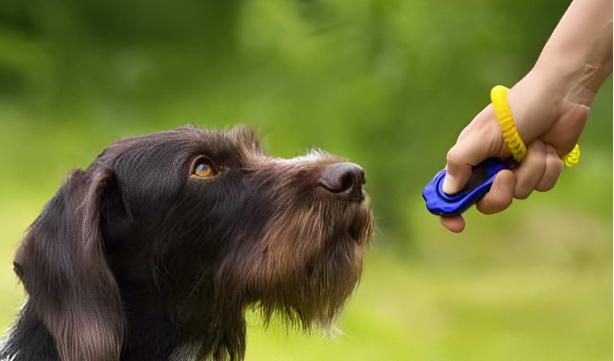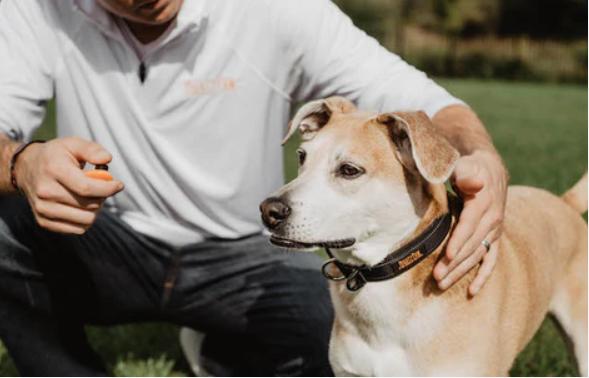How to Use a Clicker for Dog Training Effectively
Training a dog can be a challenging yet rewarding experience. Clicker training has gained popularity because of its effectiveness and positive reinforcement approach. By using a clicker, you can communicate with your furry friend more clearly, helping them understand and retain commands better. Let’s delve into the steps, techniques, and tips to use a clicker for dog training effectively.

What Is Clicker Training and How Does It Work?
Clicker training is a science-based method of training an animal that relies on marking desirable behavior with a click sound, followed by a reward. This method, grounded in operant conditioning, leverages positive reinforcement to teach dogs new tricks, commands, and behaviors.
At its core, clicker training involves the use of a small mechanical device that makes a distinct sound when pressed—a “clicker”. When a dog performs the desired behavior, the trainer clicks the clicker and then rewards the dog with a treat. The click signals to the dog that they have done something right, making it easier for them to connect the behavior with the positive outcome.
Over time, the dog learns what behaviors are being rewarded and will perform those actions more frequently. The precise click sound helps to zero in on the exact behavior that is being reinforced, which makes the training more efficient compared to using verbal cues alone.
Step-by-Step Guide: How to Use a Clicker for Dog Training
Getting Started with Clicker Training
To begin, you will need a clicker and an assortment of small, easily consumable treats. Start in a distraction-free environment to keep your dog focused. Begin by “charging” the clicker—this means associating the clicking sound with getting a treat.
Every time you click, give your dog a treat immediately afterward. Repeat this several times a day for short sessions until your dog starts to look for a treat whenever they hear the click. This simple association is the cornerstone of successful clicker training.
Teaching Basic Commands
Once your dog associates the clicker with a treat, you can start teaching basic commands. For example, to teach the “sit” command, wait for your dog to sit naturally. The moment they do, click and give them a treat. After several repetitions, your dog will begin to understand that sitting results in a reward.
You can then start using a verbal cue (“sit”) just before they naturally sit, and reinforce it with the click and treat. Gradually, your dog will associate the verbal cue with the action.

Practicing Consistently
Consistency is important in clicker training. Practice training sessions daily, but keep them short and engaging to hold your dog’s attention. Regular practice helps reinforce what your dog has learned and keeps them motivated.
Remember to progress at your dog’s pace. If they struggle with a new command, go back to the basics and rebuild their confidence step by step.
Generalizing Behavior
Dogs need to learn how to generalize commands beyond the training room. Practice commands in different environments and contexts, such as in the yard, at the park, or in various rooms of your house. This helps your dog understand that the commands apply everywhere, not just in the initial training environment.
Phasing Out Treats
Over time, gradually reduce the frequency of treats, but continue to use praise and affection as rewards. This doesn’t mean you should stop using the clicker; the click itself becomes reinforcing as your dog associates it with the positive outcomes. Randomly rewarding your dog ensures that their training remains strong and reliable.
Common Mistakes to Avoid When Using a Clicker for Dog Training
While clicker training is highly effective, several common mistakes can hinder progress. First, avoid “clicker fatigue”; clicking too much can desensitize your dog to its sound. Stick to a click-only-when-needed approach.
Remember to always follow a click with a reward; failing to do so can confuse your dog and weaken the clicker’s meaning. Additionally, timing is crucial—click the instant your dog performs the behavior you are reinforcing. Delayed clicks may confuse your dog about which action is being rewarded.
Consistency is key in clicker training. Make sure everyone involved in your dog’s training uses the same commands and techniques. Mixed messages can slow down the learning process and frustrate your dog.
Lastly, avoid rushing the training. Each dog learns at its own pace. Trying to move too quickly can lead to poor retention of commands. Patience and consistent practice are essential for effective training.
Can Clicker Training Be Used for All Dog Breeds?
Yes, clicker training can be used for all dog breeds. Regardless of size, age, or temperament, any dog can benefit from the clear and consistent communication provided by a clicker. Some breeds may pick up on commands more quickly due to their innate intelligence or eagerness to please, but with patience and practice, every dog can learn through this method.
Conclusion
Clicker training is a powerful tool for teaching and reinforcing desirable behaviors in dogs. By using positive reinforcement and clear communication, you create a fun and rewarding training environment for your dog. Remember to stay patient, consistent, and positive throughout the training process, and always appreciate the unique learning pace of your furry friend. Happy training!
FAQs
How long does it take for a dog to learn with a clicker?
The time it takes for a dog to learn a new command with a clicker varies based on several factors, including the dog’s age, previous training, and the complexity of the command. Some dogs may pick up new skills within a few training sessions, while others may take a few weeks. Consistent, short, and engaging training sessions are the most effective.
Can I use a clicker for puppy training?
Absolutely! Clicker training is highly effective for puppies. It helps in building a positive foundation for training and encourages good behavior early on. Puppies tend to respond well to the clear and consistent cues provided by clicker training.
What should I do if my dog doesn’t respond to the clicker?
If your dog doesn’t respond to the clicker, they may not understand the click is associated with a reward. Revisit the basics of “charging” the clicker by pairing the click with a treat repeatedly. Also, ensure you’re using high-value treats that genuinely motivate your dog, and minimize distractions during initial training sessions.
